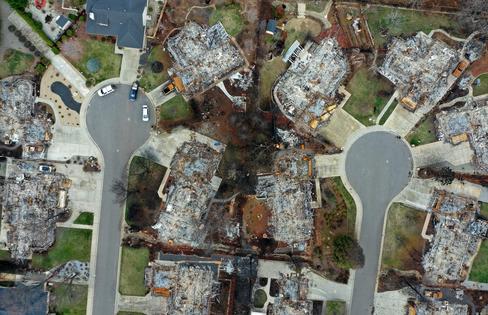Colorado is latest state to try turning off the electrical grid to prevent wildfires − a complex, technical operation pioneered in California
Published in Science & Technology News
The U.S. power grid is the largest and most complex machine ever built. It’s also aging and under increasing stress from climate-driven disasters such as wildfires, hurricanes and heat waves.
Over the past decade, power grids have played roles in wildfires in multiple states, including California, Hawaii, Oregon and Minnesota. When wind speeds are high and humidity is low, electrical infrastructure such as aboveground power lines can blow into vegetation or spark against other components, starting a fire that high winds then spread.
Under extreme conditions, utilities may opt to shut off power to parts of the grid in their service areas to reduce wildfire risk. These outages, known as public safety power shutoffs, have occurred mainly in California, where wildfires have become larger and more destructive in recent decades.
On April 5-6, 2024, Colorado utility Xcel Energy carried out that state’s first public safety power shutoff, cutting power to thousands of customers ahead of an intense windstorm. Public officials and Xcel customers complained that they had not received enough warning or explanation. Gov. Jared Polis has directed state regulators to investigate the incident and propose better procedures for the future.
I am an electrical and computer engineer, and study efficient operation of power grids. I also live in Boulder County, where a wind-driven wildfire destroyed more than 1,000 homes in 2021. These shutoffs are likely to become more common in more places as climate-driven weather extremes stress aging grid components. This makes it important to understand and evaluate utilities’ public safety shutoff plans.
Shutting off power and turning it back on – in utility-speak, de-energizing and re-energizing – requires more than flipping a switch. The power grid is a complex system that maintains a balance in real time between electricity flowing in from generating plants and out to customers.
Power lines don’t have the capacity to store electricity for use later – it has to be used immediately. This makes the grid different from other critical infrastructure. Water networks can hold water in their pipes, and roadways can support cars at a standstill if traffic can’t flow.
Because the grid can’t store electricity, de-energizing and re-energizing have to happen in stages to ensure that changes in the demand side of the power grid are not too rapid for the supply side to adapt to. Power plants can’t turn on instantaneously: Some can start up within minutes, while others take hours, depending on their age, design and the type of fuel they use. And they generally can’t raise their output from 10% of their generating capacity to 90% with the flick of a switch.
When a utility restores power after an outage, it produces a large, instantaneous spike in power use as devices in many homes turn back on. The grid also needs time to adapt to that surge in demand. And utilities may visually inspect power lines to check for damage before restoring power.
The complexities of local grids can make it seem as though these outages are being implemented unevenly or arbitrarily. The distribution transformer serving power to your home may be completely electrically disconnected from the one serving your neighbor across the street, putting your block in the dark while the next block’s lights stay on.
...continued








Comments